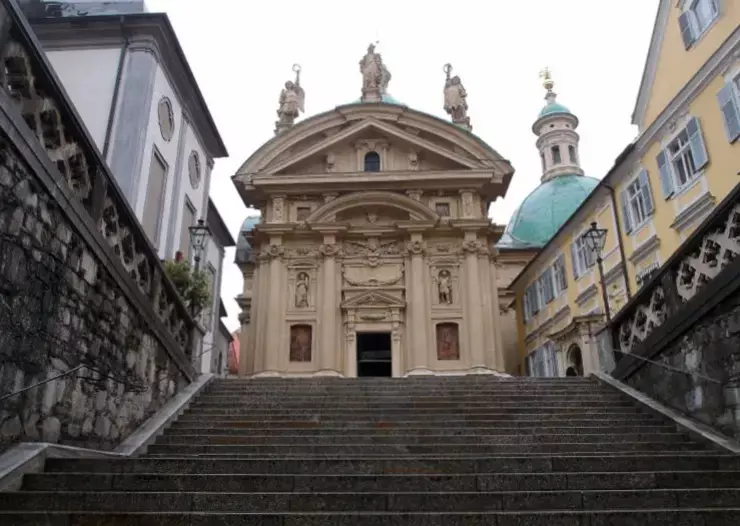Mausoleum of Emperor Ferdinand II

- The Mausoleum of Emperor Ferdinand II in Graz is one of the most significant and architecturally striking burial sites in Austria. Located near Graz Cathedral, this grand structure serves as the final resting place of Holy Roman Emperor Ferdinand II, a ruler known for his staunch Catholic faith and his role in the Thirty Years' War. Commissioned in the early 17th century, the mausoleum was designed to reflect both imperial grandeur and deep religious devotion, making it an important symbol of the Counter-Reformation in Austria.
- The mausoleum is an exquisite blend of Mannerist and Baroque architecture, showcasing the influence of Italian and Austrian design elements. It was initially designed by Giovanni Pietro de Pomis, an Italian architect and painter, who worked closely with Ferdinand II. The structure features an elegant domed roof, richly decorated stuccoes, and striking red marble columns. The interior is equally impressive, with its ornate frescoes, intricate sculptures, and gilded altars, all of which contribute to the solemn yet majestic atmosphere. One of the highlights is the elaborate sarcophagus of Ferdinand II, made of red Salzburg marble, alongside the tomb of his wife, Empress Maria Anna of Bavaria.
- The mausoleum’s connection to St. Catherine’s Church, which is integrated into the structure, adds to its historical and religious significance. The church was dedicated to St. Catherine of Alexandria, the patron saint of scholars and philosophers, reflecting Ferdinand II’s deep association with the Jesuits and Catholic education. The harmonious blend of church and mausoleum makes this site unique among European imperial tombs.
- Today, the Mausoleum of Emperor Ferdinand II stands as a monument to Habsburg power, faith, and artistic achievement. It is open to visitors, offering a glimpse into the imperial history of Austria and the cultural transformations of the 17th century. Whether admired for its architectural beauty, its historical depth, or its serene ambiance, the mausoleum remains an essential landmark in Graz.
